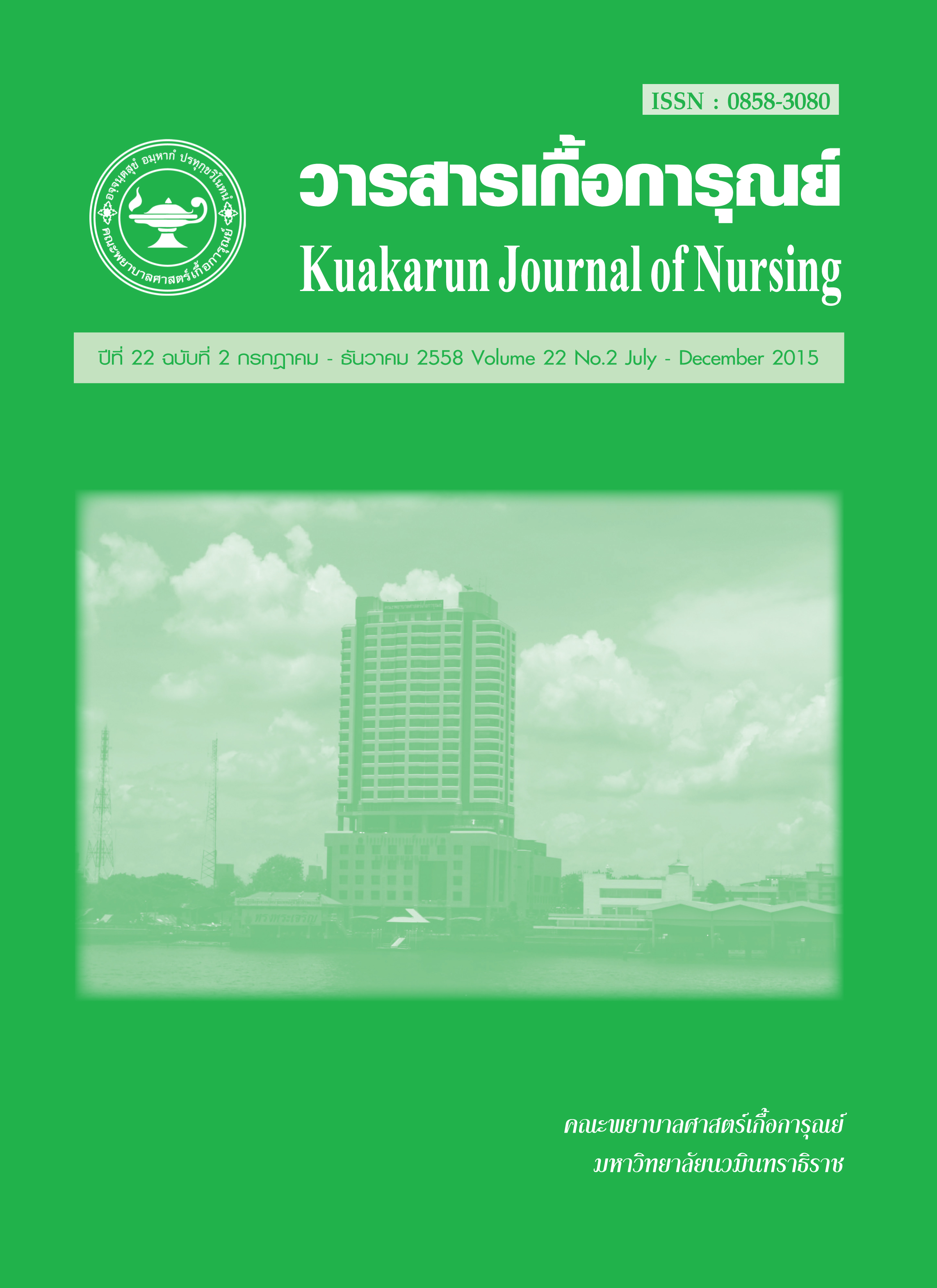บทบาทพยาบาลในการป้องกันภาวะความดันโลหิตสูงในสตรีตั้งครรภ์ Nursing Roles for Preventing Preeclampsia
คำสำคัญ:
ภาวะความดันโลหิตสูง, ในสตรีตั้งครรภ์, บทบาทพยาบาลบทคัดย่อ
ภาวะความดันโลหิตสูงในสตรีตั้งครรภ์เป็นภาวะแทรกซ้อนทางสูติกรรมที่ส่งผลกระทบ
รุนแรงต่อทั้งสตรีตั้งครรภ์และทารกในครรภ์ โดยอาจทำให้สตรีตั้งครรภ์เกิดการชัก เกิดภาวะ
ของโรคหลอดเลือดสมองอย่างฉับพลัน และกลุ่มอาการ HELLP ในขณะที่ทารกอาจเกิดภาวะ
เจริญเติบโตช้าในครรภ์ การคลอดก่อนกำหนด เป็นต้น ถึงแม้ในปัจจุบันยังไม่ทราบสาเหตุ
การเกิดภาวะความดันโลหิตสูงในสตรีตั้งครรภ์ที่แท้จริง แต่ก็สามารถป้องกันภาวะความดันโลหิตสูง
ขณะตั้งครรภ์โดย 1) เฝ้าระวังความเสี่ยง ได้แก่ การประเมินประวัติสูติกรรมในอดีต ประวัติการ
ตั้งครรภ์ปัจจุบัน ประวัติการเจ็บป่วย ระดับดัชนีมวลกายก่อนการตั้งครรภ์ การเพิ่มขึ้นของ
น้ำหนักระหว่างตั้งครรภ์ และค่าความดันโลหิต 2) ให้คำแนะนำสตรีตั้งครรภ์ในการปฏิบัติตน
เพื่อป้องกันภาวะความดันโลหิตสูงขณะตั้งครรภ์โดยพักผ่อนอย่างเพียงพอ และการรับประทาน
อาหารที่มีเส้นใยและมีปริมาณแคลเซียมสูง 3) ให้คำแนะนำในการปฏิบัติตนเพื่อลดความรุนแรง
ของภาวะความดันโลหิตสูงขณะตั้งครรภ์โดยการสังเกตอาการผิดปกติ ได้แก่ ปวดศีรษะ จุกแน่น
ลิ้นปี่ การมองเห็นเปลี่ยนแปลง การนับการดิ้นของทารกในครรภ์อย่างสม่ำเสมอ และการ
ฝากครรภ์ตามนัด พยาบาลมีบทบาทสำคัญในการประเมินปัจจัยเสี่ยง ทั้งปัจจัยที่สามารถปรับ
เปลี่ยนได้ ปัจจัยที่ไม่สามารถปรับเปลี่ยนได้ และปัจจัยที่ได้จากการประเมินทางคลินิก เพื่อ
เฝ้าระวังความเสี่ยงและนำไปสู่การวินิจฉัยที่ทันท่วงที รวมถึงยังมีบทบาทในการให้คำแนะนำ
แก่สตรีตั้งครรภ์เพื่อป้องกันและลดความรุนแรงของภาวะความดันโลหิตสูงในสตรีตั้งครรภ์ด้วย
Nursing Roles for Preventing Preeclampsia
Preeclampsia is an obstetric complication which is counted as one of the
most common cause of death in both pregnant women and their babies.
Complications in the pregnant women include seizure, stroke, and HELLP
syndrome; meanwhile babies of those pregnant women may have fetal growth
restriction and sometimes they are preterm delivery. Etiology of preeclampsia
is unclear, important advice of preventing include: 1) maternal monitoring by
assessing previous delivery, present pregnancy, illness history, pre-pregnancy
body mass index, gestational body weight gain, and blood pressure, 2) providing
advice on how to prevent themselves from preeclampsia during their pregnancy,
such as, having high fiber, high calcium dietary and adequate sleep, 3) providing
advice about decreasing potential preeclampsia by observing signs of eclampsia,
for example, headaches, epigastric pain, and visual disturbances. Record fetal
movement and regular ante-natal visit are also necessary. Nurses play an
important role in assessing risk factors which are modifiable factors, nonmodifiable
factors, and clinical assessment factors to monitor the patients’ risk
which could help early diagnosis. In addition, their advice of preeclampsia
prevention and preeclampsia severity reduction is also meaningful for the
patients.















